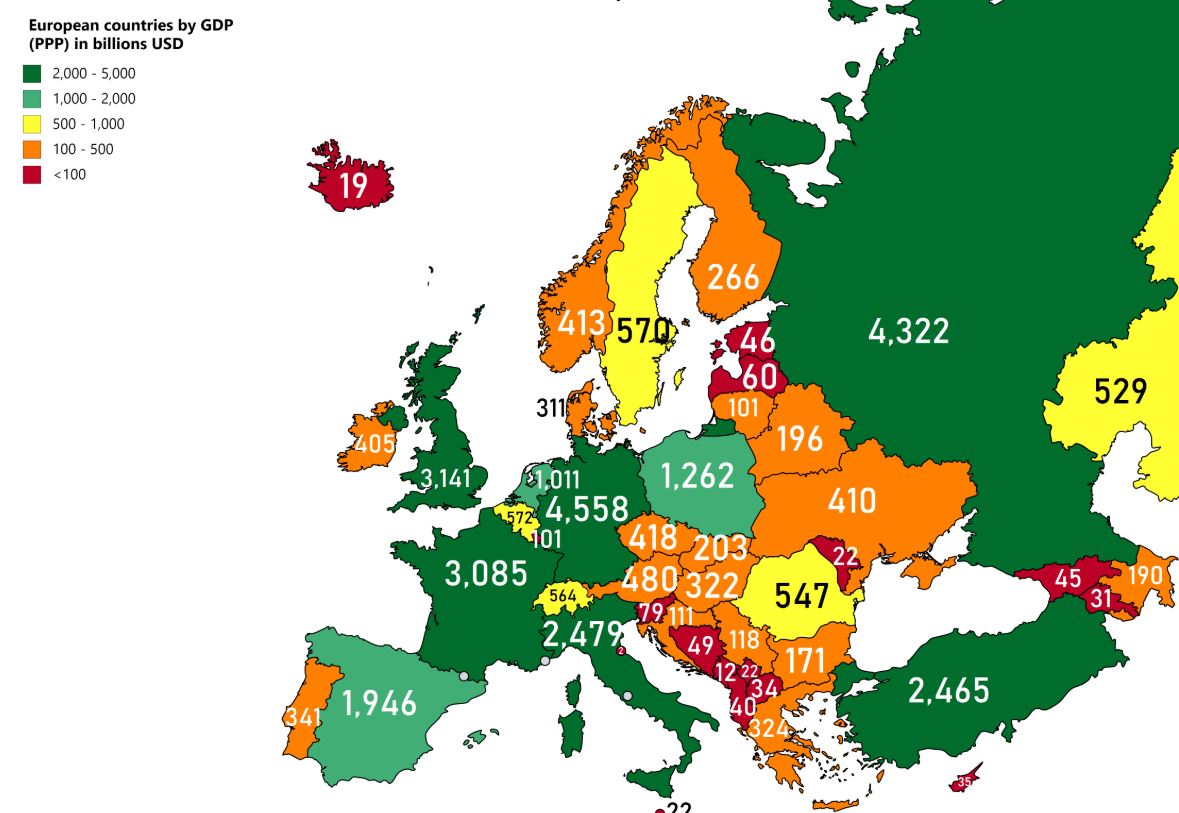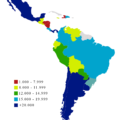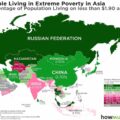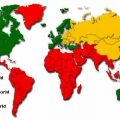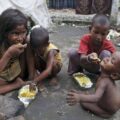Although the European Union (EU) largely consists of many advanced nations, it is important to remember that these nations are still affected by poverty. Many countries were affected by the euro crisis that began in 2008 and are still suffering its consequences. The top 10 list of the Poorest Countries in Europe is drafted on the basis of report given by the International Monetary Fund assessments are discussed below:
- Romania
GDP per Capita: $9520
It is a sovereign state located at the crossroads of Central, Eastern, and South-eastern Europe. It is a developing country and ranks 52nd in the Human Development Index. It has the world’s 47th largest economy by nominal GDP.
- Bulgaria
GDP per Capita: $7620
It is a Balkan nation with diverse terrain encompassing the Black Sea coastline, a mountainous interior, and rivers, including the Danube. It has an open, upper-middle-income range market economy where the private sector accounts for more than 70% of GDP.
- Montenegro
GDP per Capita: $7320
It is located in the Southeastern part of Europe on the Adriatic Sea. It has service-based and is in late transition to a market economy.
- Serbia
GDP per Capita: $5820
It is a sovereign state situated at the crossroads of Central and Southeast Europe in the southern Pannonian Plain and the central Balkans. It has an emerging market economy in the upper-middle income range.
- Republic of Macedonia
GDP per Capita: $5150
It is located in the Balkan peninsula of Southeast Europe. It has ranked as the fourth “best reformatory state” out of 178 countries ranked by the World Bank in 2009. In recent years, the country has developed an open economy with trade accounting for more than 90% of GDP.
- Bosnia and Herzegovina
GDP per Capita: $4760
It is located in the Southeastern part of Europe. It had started with the dual-problem of rebuilding a war-torn country and introducing transitional liberal market reforms to its formerly mixed economy. Recently, it has displayed positive progress in the previous years, which decisively moved its place from the lowest income equality rank of income equality rankings fourteen out of 193 nations.
- Albania
GDP per Capita: $4450
It is located in the Southeastern part of Europe. The economy of this country is transformed from socialist planned economy to a capitalist mixed economy. It has the 4th lowest unemployment rate in the Balkans region and its largest trading partners are Italy, Greece, China, Spain, Kosovo, and the United States.
- Kosovo
GDP per Capita: $3990
This is a partially recognized state and disputed territory in South-eastern Europe that declared independence from Serbia in February 2008. The economy of this country is a transition economy. Without foreign assistance, growth of GDP of the country averaged over 5% a year. This was despite the global financial crisis of 2009 and the subsequent Eurozone crisis. Additionally, the inflation rate has been low. The most economic development has taken place in the trade, retail, and construction sectors.
- Ukraine
GDP per Capita: $3560
This is a sovereign state in Eastern Europe. In Soviet times, the economy of Ukraine was the second largest in the Soviet Union, being an important industrial and agricultural component of the country’s planned economy. With the disintegration of the Soviet Union, the country moved from a planned economy to a market economy. The transition was difficult for the majority of the population which plunged into poverty.
- Moldova
GDP per Capita: $2560
It is a landlocked country in Eastern Europe which is bordered by Romania to the west and Ukraine to the north, east, and south of the disputed territory of Transnistria.
This was part of USSR but after the disintegration of USSR in 1991, energy shortages, political uncertainty, trade obstacles and weak administrative capacity contributed to the decline of the economy. In order to boost the country’s economy, the government had introduced a convertible currency, liberalized all prices, stopped issuing preferential credits to state enterprises, backed steady land privatization, removed export controls, and liberalized interest rates.
12 Facts About Poverty in Europe
One in four Europeans experiences at least one form of poverty. Forms of poverty include income poverty, severe material deprivation, very low work intensity, and social exclusion. Income poverty is the most common form of poverty in Europe, affecting 17.3 percent of people. One hundred eighteen million people (23.5 percent) of the EU-28 population were at risk of poverty or social exclusion, with 43 million of those not able to afford a quality meal every second day. This is known as severe material deprivation.
Social exclusion is the lack of social resources and rights available to most people as a result of poverty or being part of a minority group. In 2015, more than a third of the population was at risk of poverty or social exclusion in three EU countries: 41.3 percent in Bulgaria, 37 percent in Romania, and 35.7 percent in Greece. The countries with the lowest risk were the Czech Republic at 14 percent and Sweden at 16 percent.
The poverty line is the minimum level of income needed to secure the necessities of life and differs greatly for each European country. An average of 9.8 percent of people in the EU live below the poverty line. The country with the lowest amount of people living below the poverty line is Austria at four percent, and the highest is Greece at 36 percent. This is one of the 12 facts about poverty in Europe that reveals the enormous gap between wealthier and poorer countries in Europe.
The unemployment rate in Europe is only around seven percent. According to Eurostat, some countries rank above this average with Greece at 20.9 percent and Spain at 16.3 percent. In 2016, 48.7 percent of people who were unemployed were at risk of poverty. Unemployment also makes people more at risk of severe material deprivation.
Poverty in Europe is not limited to those who are unemployed. In 2015, 7.7 percent of the EU population was at risk of poverty despite working full-time, with men more at risk than women. Romania has Europe’s highest risk of in-work poverty with a rate of 18.9 percent. Spain and Greece follow with 13.1 percent and 14.1 percent, respectively. Additionally, the in-work poverty risk has increased from 8.3 percent in 2010 to 9.6 percent in 2016.
Women have a higher risk of poverty in Europe. The number of women suffering from poverty or social exclusion in the EU was 1.9 percent higher than men in 2015. Additionally, young people between the ages of 18 and 24 are more at risk of poverty or social inclusion with a risk of 30.6 percent.
In 2015, almost 50 percent of all single parents in Europe were at risk of poverty or social exclusion, which is twice as much as the risk for any other household.
Foreigner-born residents (39.2 percent) are at a higher risk of poverty or social exclusion than native citizens (21.6 percent). In Italy, the number of foreigners at risk is particularly high at 55 percent.
Children below the age of 18 also have a high rate of poverty or social exclusion, at 47 percent, with 26 million children in the EU living at risk of poverty or social exclusion. Child poverty in the U.K. has reached its highest level since 2010, reaching 30 percent.
Even with the economy improving, one in three people in Spain still lives in poverty, which is defined as living on €8,000 or less per year. Children are also at a higher risk of poverty in Spain. In Andalusia, a Spanish province, child poverty reached 44 percent.
Italy has the most people at risk of poverty in Europe. This amount rose from 15 million to 18 million people since the 2008 crisis, with over 4 million people living in absolute poverty.
The heads of government in the EU adopted the Europe 2020 Strategy in 2010 to address poverty. The goal of this was to lift at least 20 million people out of the risk of poverty and social exclusion by 2020. Unfortunately, this goal has not been reached and the situation has gotten worse instead of better. There has been an increase in poverty in the EU over the past years. In 2009, there were 117 million people and 27 EU member states at risk of poverty or social inclusion in the EU Since then, there has been an increase of 1.6 million people and one country.
Although these 12 facts about poverty in Europe may introduce a growing problem, the EU along with the European governments are taking active steps to fight this problem. Several countries’ economies are now expanding and showing improvement since the crisis. This includes Spain’s economy, which now has a predicted growth of 2.5 percent in 2018. It is imperative to continue to provide foreign aid and assistance in order to ensure that U.S. allies continue to grow and move past the repercussions suffered after the crisis.

